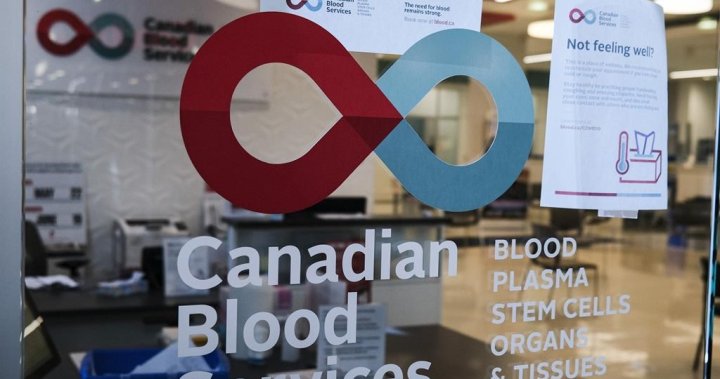The parking lot at Canadian Blood Services in downtown Vancouver is unusually quiet for a Thursday afternoon. Inside, Kerry DeSanto, a territory manager who has worked with the organization for over 15 years, walks me through rows of empty donation chairs.
“Summer is always our most challenging season,” she explains, adjusting a stack of donor pamphlets. “People go on vacation, routines change, and we see a significant drop in appointments just when demand often increases.”
This summer, the need is particularly acute. Canadian Blood Services reports that nationally, there are 33,000 open appointments that need to be filled by July 1st. In British Columbia alone, 4,400 donors are needed in the coming weeks.
For patients like Marissa Chen, these statistics aren’t just numbers. Three years ago, Chen was diagnosed with acute myeloid leukemia and required multiple blood transfusions throughout her treatment.
“Each bag hanging above my hospital bed represented someone who took an hour out of their day to help a stranger,” Chen tells me, touching the small maple leaf pin on her jacket – a symbol she wears to honor her donors. “Those transfusions literally kept me alive while my body fought to recover.”
According to Health Canada data, someone in Canada needs blood every 60 seconds. Despite this constant demand, only about 4% of eligible Canadians donate blood regularly.
Dr. Isra Levy, Canadian Blood Services’ Vice President of Medical Affairs, explains why maintaining a stable blood supply is particularly challenging during summer months.
“We need to collect about 100,000 new donations between now and the end of August to meet projected hospital demands,” says Dr. Levy. “Blood products have a limited shelf life – platelets last only 7 days, while red blood cells can be stored for up to 42 days. This means we can’t stockpile supplies for extended periods.”
The organization is especially concerned about maintaining sufficient levels of O-negative blood, often called the “universal donor” type that can be given to any patient in emergency situations when there isn’t time to determine blood type.
I visited Keisha Williams, an emergency department nurse at Vancouver General Hospital, during her shift. Williams has witnessed firsthand how critical blood supplies become during summer trauma seasons.
“Highway accidents increase, more people are doing outdoor activities where injuries can happen,” Williams says, momentarily pausing our conversation to check a monitor. “We never want to be in a position where we’re making difficult decisions about blood product allocation.”
Last summer, Williams treated a young mountain biker who crashed on a North Shore trail and required multiple units of blood before emergency surgery. “Without immediate access to those blood products, the outcome could have been very different.”
Research published in the Canadian Medical Association Journal shows that maintaining adequate blood supplies isn’t just about emergency response. Many scheduled surgeries, cancer treatments, and chronic disease management protocols depend on consistent blood product availability.
Canadian Blood Services has launched several initiatives to boost summer donations. Their “Give 3 in 2023” campaign encourages regular donors to bring friends or family members. They’ve also extended hours at many donation centers and implemented a new online booking system to make appointments more convenient.
When I visited the Vancouver donation center, I met Raj Sidhu, a tech company employee who was making his first donation.
“I always meant to donate but never got around to it,” Sidhu admitted, slightly nervous as a phlebotomist prepared his arm. “Then my cousin needed blood during cancer treatment, and I realized how important this really is.”
For those hesitant about donating, Kerry DeSanto offers reassurance. “The actual donation takes only about 10 minutes, though the entire process with screening is about an hour. Most people feel fine afterward – we recommend staying hydrated and avoiding strenuous activity for the rest of the day.”
Canadian Blood Services has also worked to make donation more inclusive in recent years. In 2019, they implemented screening changes that focus on individual risk assessment rather than broad exclusions of certain populations. Last year, they removed the three-month waiting period for men who have sex with men to donate, replacing it with screening questions about sexual behavior that apply to all donors regardless of gender or sexuality.
The organization is emphasizing that many common misconceptions prevent eligible donors from contributing. People taking most prescription medications can donate, as can those with common conditions like controlled diabetes or mild asthma.
As I prepare to leave the donation center, I watch Yolanda Patel celebrate her 50th lifetime donation. Staff present her with a certificate and a small pin, and other donors applaud.
“I started donating when I was in university,” Patel tells me. “Now it’s just part of my routine – every three months, I come in. It’s such a small thing that makes such a big difference.”
For those interested in donating this summer, appointments can be made through the Canadian Blood Services website or mobile app. First-time donors are welcome, and all blood types are needed. As DeSanto reminds me on my way out: “When you donate blood, you’re not just giving blood – you’re giving someone more time with their loved ones.”
The organization hopes Canadians will answer the call this summer, filling those 33,000 open appointments and ensuring that when someone needs blood – whether from a sudden accident or during ongoing treatment – it will be there waiting for them.






